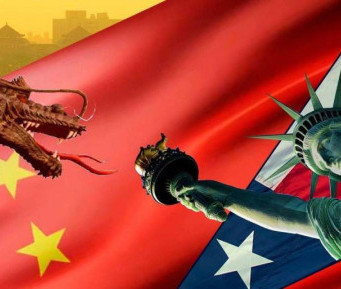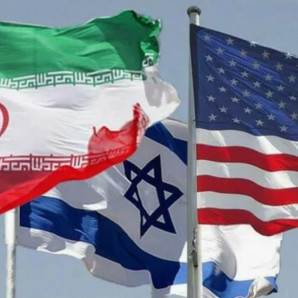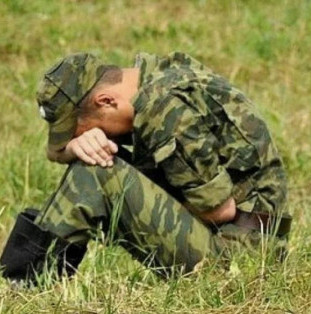The Arctic already became a real zone of competition and rivalry between Canada, Denmark (Greenland), Norway, Russia and USA located on the coasts of the Arctic Ocean. They struggle for establishment of national sovereignty over the Arctic areas, and provision of their own military and energy security interests there. The situation is aggravated with absence of any international conventions or agreements on demilitarization of the Arctic as distinct from the Antarctic.
According to scientific observations, the temperature in the Arctic increased during the last decades two times faster than in other regions of the globe. It resulted in shrinking the ice cap by 8 per cent on the average annually during the last 30 years. The progressive ice melting facilitates navigation in earlier heavily accessible or inaccessible routes. The year of 2007 was the first year in the known history when the North-Western Passage along the coast of Alaska and Canada from the Pacific to Atlantic was open for navigation during the entire summer season. Experts predict that not later than 2050 (or earlier, most probably) this passage will be open for full-fledged commercial navigation each summer and make the Panama Canal almost useless.
The North-Western Passage is already reviewed as a future “apple of discord” between Canada insisting that this passage is a part of its territorial waters, and USA stating that the passage should have an international free status. This conflict will be aggravated by permafrost thawing in Polar regions that will make operation of the available ground oil and gas pipelines in transpolar areas impossible, and transportation of hydrocarbons by sea the most efficient.
The Arctic ice-out also endangers with aggravation of international disputes about control over huge energy and other natural resources in the Arctic shelf, which are facilitated with omissions in the international law and in the United Nations Convention of the Law of the Sea. Moreover, the access to these resources becomes more and more feasible year after year – according to certain estimates, in 2040 the Arctic may be free of ice in summer up to September. Meanwhile the Arctic seabed stores 25 per cent of all undiscovered oil and gas reserves.
Signs of conflicts associated with future divide of Arctic energy resources are already visible. For example, the USA and Canada are in dispute over “a territorial verge” in the Beaufort Sea, a potential field of up to 7 billion barrels of oil and more than 90 billion cubic meters of natural gas. Canada and Denmark are in dispute over small Hans island in a narrow strait between Greenland and Canadian Arctic Archipelago islands, where large deposits of mineral resources are predicted. Russian and Norway cannot settle a dispute over the boundaries of their economic zones in the Barents Sea, where GAZPROM develops the largest deposit of natural gas, Shtokman Field.
Another conflict between Moscow and Oslo may occur over the Spitsbergen Archipelago, where large deposits of oil and gas are predicted. Russia also intends to restore its control over the Bering Sea shelf between Alaska and Chukotka. In 1990, former Soviet Foreign Minister Edward Shevardnadze ceded it to the USA but the agreement failed to be ratified by the Russian State Duma.
But the most anxious event of the last years is “an Arctic rice” of all five Arctic neighbors for establishment of sovereignty over the area of the North Pole itself. It is well-known that in August 2007 the Russian expedition set up the flag of Russia on the seabed in the geographical point of the North Pole by using submersible craft MIR. This action provoked acute reaction of Canada, USA, Denmark and even European Union.
The West is concerned that the striving of Russia to prove that the Lomonosov submerged ridge adjacent to the North Pole is a part of the Russian continental shelf, is an attempt to “stake a claim for” potentially huge reserves of hydrocarbons in this region. A special report distributed at the last EU Summit this March in Brussels expressly states that European countries should be ready to struggle for energy resources, including to collide with Russia for mineral wealth of the Artic. Washington does not hide its “concerns” over the renewed patrols of the Russian strategic aviation including in the Arctic, when Russian bombers fly at a distance of 800 km “only” from the coast of Alaska.
It is notable that Norway already submitted its claims for a part of the Northern Pole to the United Nations in 2006. It is known that Russia is going to submit new evidence of its Arctic rights to the UN in 2009. Canada is expected to submit its claims for the Pole in 2013. Denmark reported about preparation of its file within the framework of the UN Convention of the Law of the Sea to be presented to the United Nations in 2014 to justify belonging of the Lomonosov Ridge to the Greenland shelf. The USA that hasn’t joined the UN Convention of the Law of the Sea yet, nevertheless is also preparing justification of its claims for the North Pole. According to the study of the New-Hampshire University published this February, the US continental shelf extends northwards of Alaska for more than 100 nautical miles farer than it was expected before.
It appears that the conflict for the Arctic will not be limited with diplomatic steps only. For example, the USA and Canada do not hide their intentions to start expanding their military presence in the Arctic Region in the near future. The Canadian Government made a decision to build 6-8 special Arctic patrol ships capable of operating in the Canadian Arctic waters from June until October, and three support vessels with reinforced hulls for ice navigation. Although Canada abandoned the idea to build three armed ice-breakers, it is going to establish a network of logistic bases in the Arctic, radically increase the strength of the Canadian Rangers and deploy units of long-range reconnaissance UAVs in the remote areas.
The USA has much more challenging plans of Arctic military development. A key base supporting Arctic operations of the American troops is well-known US base Tule in Greenland. Tule located at latitude of 76.5 degrees North is”the most Polar” base of the United States. It is a home airfield for reconnaissance, antisubmarine, transport and rescue airplanes and helicopters as well as air tankers. The local aerodrome is a stopover base for aircraft flying to Iraq and Afghanistan. Tule is also a sea port free of ice for 60-90 days a year. The United States deployed here strategic facilities: missile early warning station and space track facility.
Nuclear-powered submarines designed to operate under the Arctic ice also play an important role in support of the US claims. Recently the USA together with Great Britain became expressly more active in conduct of submarine exercises in the Arctic Ocean. Often the submarines demonstratively surface at the North Pole during such exercises.
The US Coast Guard that formally is not included in the Armed Forces in peacetime, also significantly contributes to promotion of the American interests in the Arctic, operating mainly from its bases in Alaska. According to Western mass media, as from March 2008 C-130 aircraft and helicopters of the Coast Guard will permanently perform patrols to collect information on navigation, ice conditions and general situation in the Arctic areas. In summer they will be supported by patrol ships and boats. To this end, two forward operating locations have been specially deployed – Barrow and Nom in north Alaska. It is expected that in the near future two ice-breakers and one ice-breaking research vessel of the Coast Guard which service life is expiring, will be replaced with new ones.
Certain Western experts believe that in future the world will see “new Arctic” where rivalry for sovereignty over Arctic areas and control over its wealth and sea routes may potentially cause dangerous consequences for international security including military conflicts.
To avoid such dismal scenario of transforming the Arctic into an arena of arms race and hotbed of tension it is necessary as soon as possible to make decisions at the UN level and take steps to settle existing bilateral disputes amicably. Are all concerned nations ready to such solution? It’s a big question. This problem is complicated no less than the ability of mankind to stop the global heating. Meanwhile the Arctic ice is melting...









